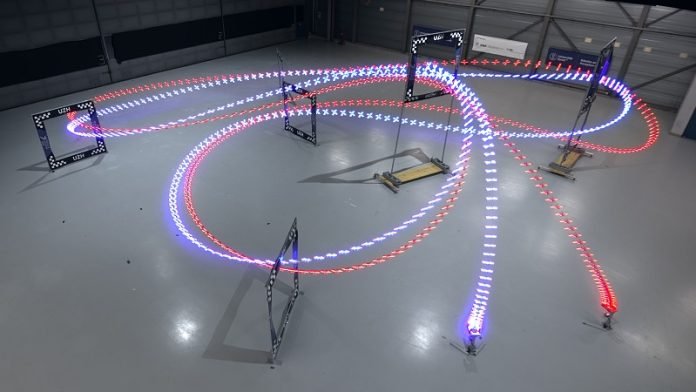
Remember the times when computers beat humans at board games?
Like when IBM’s Deep Blue beat chess champion Gary Kasparov in 1996?
Or when Google’s AlphaGo defeated Lee Sedol, a top player in the tricky game of Go, in 2016?
Well, computers have now moved from board games to real sports! A team from the University of Zurich and Intel has built a drone that beat human champions in racing!
This super-smart drone is named Swift. It took part in drone races where it flew against three human champions.
Drone racing is a sport where small, flying robots called drones race at high speeds of over 60 miles per hour. Pilots control these drones from a distance, using a special headset that lets them see what the drone sees.
The challenge for Swift was not just the speed. Unlike board games, real-world sports like drone racing are full of surprises.
The drone has to navigate the track while adjusting to changes around it. Davide Scaramuzza, the guy leading the team, said that flying a drone is way more unpredictable than playing board games on a computer.
Before Swift, drones controlled by computers were slower racers compared to those flown by humans. But Swift is different.
It uses a camera to see where it’s going, just like human racers do. It has special sensors that measure how fast it’s moving and turning. And then, its ‘brain’ (a kind of computer program) decides the fastest way to finish the race.
How did Swift learn to fly so well? It practiced in a computer simulation. Think of it like a video game where the drone could learn from its mistakes without actually getting damaged. This is a method known as “reinforcement learning.”
And to make sure the drone was ready for the real world, the researchers used data from actual flights to improve the simulation.
After a month of this virtual practice, Swift was ready to race against real humans.
It competed against Alex Vanover, the 2019 Drone Racing League champion, Thomas Bitmatta, the 2019 MultiGP Drone Racing champion, and Marvin Schaepper, a three-time champion in Switzerland.
The race happened on a special track near Zurich, which had different gates and even some tricky moves like the Split-S—a complicated, acrobatic move.
Swift actually completed the fastest lap, beating the human pilots! However, it did face some limitations. For example, if the lighting changed too much, Swift got a little confused. But humans could adapt better to these changes.
Why is this so important? Because fast drones are not just for racing. They can help in many other ways, too!
For example, they could scan forests quickly to check for fires or go through buildings to find people trapped inside. They could even be used in movies to film fast-paced action scenes.
So, this isn’t just a win in the sports world; it’s a big step for how drones can be used to make our lives better!
The study was published in the journal Nature.
Follow us on Twitter for more articles about this topic.



